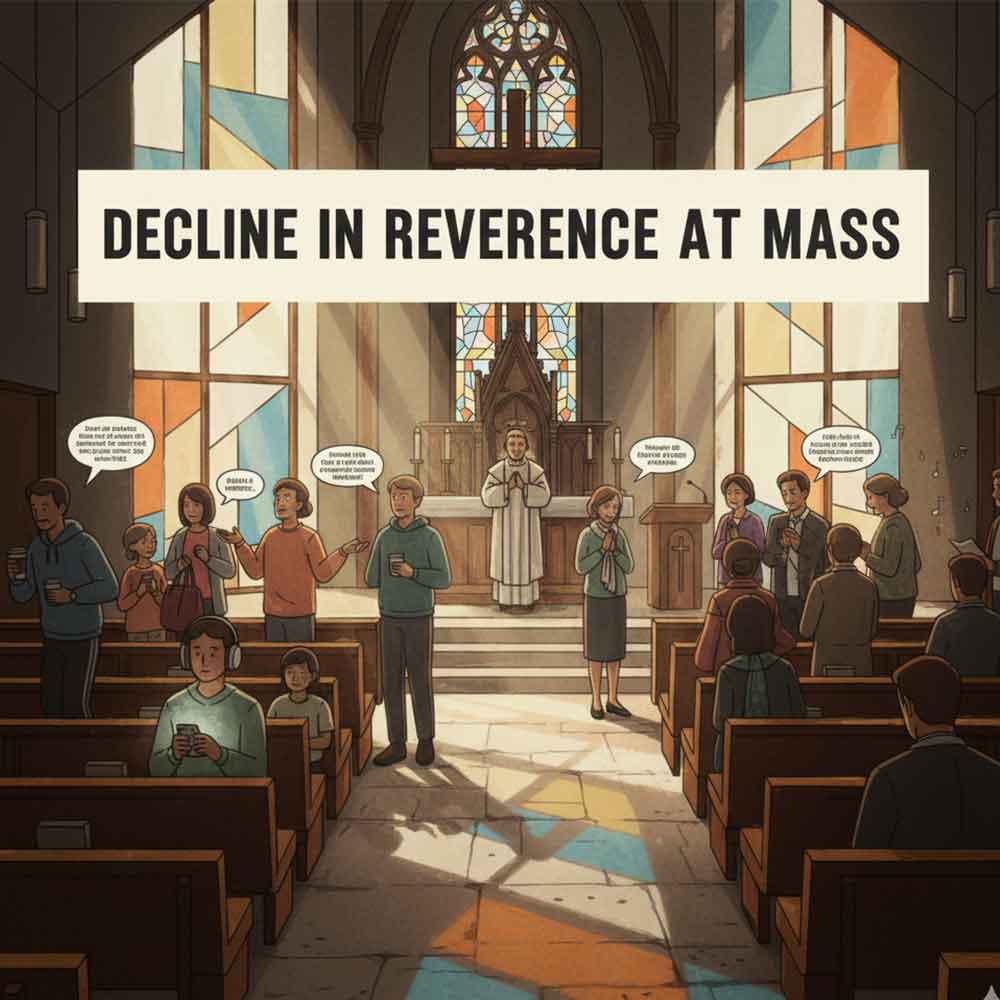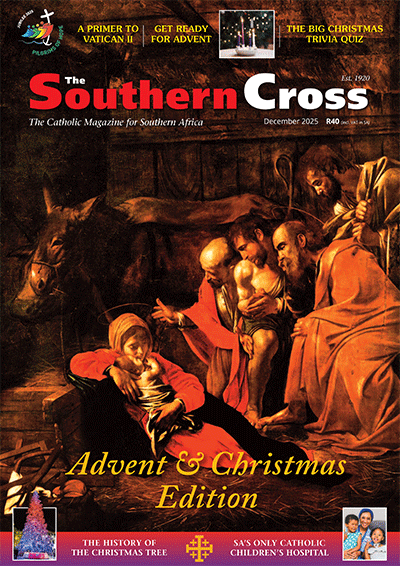Decline in Reverence at Mass
Has comfort replaced contemplation in the way we approach the Mass?
By Jason Scott – In many parishes today, worship begins with soft bustle and ends in premature departure. Some arrive only as the altar is being prepared; others leave almost immediately after Communion. Before Mass, there is movement, low conversation, and casual gestures. These are more than incidental lapses. They reveal a gradual softening of what the Mass means in people’s minds.
The Mass is not a casual gathering. It is not a programme or event designed for comfort and enjoyment. It is worship, encounter, and mystery. When that distinction blurs, the gestures and silences meant to prepare us for God’s presence begin to lose their weight. The sacred becomes something we attend rather than something we enter.
Clapping during the liturgy is a particularly telling symptom. Cardinal Joseph Ratzinger once warned:
“Wherever applause breaks out in the liturgy because of some human achievement, it is a sure sign that the essence of the liturgy has totally disappeared and been replaced by a kind of religious entertainment.”
Even well-intentioned applause shifts attention. It turns worship into performance. Behind it lie other signs of dilution: casualness, late arrival, early exit, and wandering movement. Each reinforces the other, slowly eroding the sense of what is holy.
Many treat parts of the Mass as optional. Arriving late suggests that only the “main bits” matter. Some see no issue with chatting before Mass, as if waiting for a concert to begin. Yet that attitude undermines preparation. Pope Francis has cautioned against this, saying, “When we go to Mass, maybe we arrive five minutes before, and we start to chit-chat … it is not a moment for chit-chat.” Silence before Mass is not merely the absence of noise. It is the first act of worship, the space in which hearts settle and the mind begins to recognise the sacred.
The way we dress also carries meaning. Clothing is never neutral. To arrive with little thought, dressed for errands or leisure, suggests that the moment is ordinary. Modest and respectful attire signals something else entirely: that we step into a sacred moment. Popes and saints have long reminded the faithful that our bodies, gestures, and garments matter. A small effort in dress is not about formality but about dignity. One would not wear pyjamas to a wedding or a funeral; why then to the Holy Sacrifice of the Mass?
This decline in reverence reflects something broader. A culture that prizes ease over discipline will inevitably lose its sense of the sacred. When people care less about how they behave, how they dress, or how they pray, something larger is being surrendered. Standards in public life, in art, in education, in politics, all follow the same downward curve. A society that no longer expects dignity slowly forgets what it looks like.
Younger generations sense this instinctively. Many are turning towards more traditional forms of Christianity, whether Catholic or Orthodox. They do so not out of nostalgia but from recognition that something precious has been lost. They have seen worship turned into entertainment, and they recoil. They want ritual, silence, structure, and mystery — the things that resist flattening and demand reverence. Their restlessness carries a warning: faith cannot thrive when its worship becomes shallow.
Older generations sometimes fail to see how serious the young are about this. They are not seeking novelty but weight. They believe faith must reach into every part of life, including how we use our bodies, our time, and our attention. They will not settle for a hollow liturgy.
We must take the faith more seriously. We must learn again to pay attention. Bit by bit, we need to restore what once gave worship its form and meaning. That must become the new norm, not all at once, but by steady effort.
This is not a call for three-piece suits or head coverings, though it would be nice to see a return of veils and blazers.
At the very least, change must begin with simple steps: recover silence before Mass, arrive a few minutes early (at least five), stay until the final blessing, refrain from applause during the sacred action, and dress with modest dignity. Over time, these small reforms take root, and the atmosphere of worship changes. The sacred begins to breathe again. It will also cause a butterfly effect, where the effects with spread into our daily lives.
In this recovery lies hope. If enough parishes rediscover that quiet expectation, the Mass will cease to drift and regain its weight, its mystery, its sense of encounter. The liturgy is not about comfort or entertainment. It is about meeting Him. Until our bodies, gestures, clothing, silence, and timing once again express that truth, we will remain adrift.
- What the Pope Said this Week - November 21, 2025
- What the Pope Said This Week - November 17, 2025
- Constantine, the Catholic Church and the Myth of a Man-Made Faith - November 13, 2025





